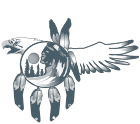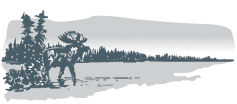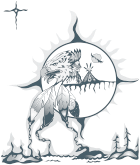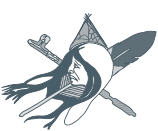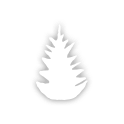
The Land That Gives Life
Plants
u XUWnooB
There are roughly 700 plant species living in Pimachiowin Aki’s lands, wetlands and waters, including trees, shrubs, flowers, grasses, mosses and lichens
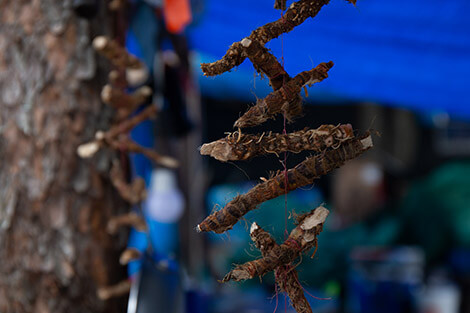
The bush is our drugstore and we are grateful for all the plants that give up their lives to keep us alive and help cure sickness. We need to honour those plants and to make sure they are looked after.
Elders Abel Bruce and Albert Bittern
The land is covered mainly by moss, lichen, jack pine and black spruce. Trembling aspen, white spruce and balsam fir appear along rivers and lakes. White spruce and balsam fir grow here, but they are scarce because, unlike other trees, they take a long time to regenerate after being destroyed by the large wildfires that frequently burn in Pimachiowin Aki.
Anishinaabeg hold a wealth of traditional knowledge about plants. They have long used plants to sustain their communities and way of life, while sustaining the health of the boreal shield. For Anishinaabeg, plants are a significant source of food, medicine, and building and craft materials. Wildlife rely on Pimachiowin Aki’s plants for safe shelter and nutritious food.
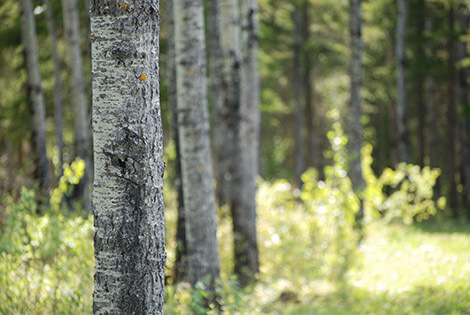
We greatly value the poplar tree as an important food source for beaver and snowshoe hare, which we depend on for food, for the making of snares from poplar saplings, and for medicinal use of the bark.
Poplar River Land Management Plan
| Plants | Common Use |
| Balsam poplar | Smoking meat and fish, curing hides, medicine (bark), snares, food for beaver and snowshoe hare |
| Birch | Kindling, baskets (bark), sap, snowshoes, canoes (bark), horns for calling moose (bark), coverings for wigwams (bark) |
| Black ash | Firewood, medicine |
| Black spruce | Firewood, medicine |
| Blueberry | Food, medicine |
| Bunchberry | Food, medicine |
| Chokecherry | Food, medicine |
| Cloudberry | Food |
| Common cattail | Food, medicine |
| Dewberry | Medicine |
| Fireweed | Medicine, tea |
| Highbush cranberry | Food |
| Jack pine | Firewood, tipi poles |
| Labrador Tea | Medicine, tea |
| Lingonberry | Food |
| Manoomin (northern wild rice) | Food |
| Mint | Medicine |
| Mooseberry | Food |
| Pin cherry | Food |
| Pitcher plant | Medicine |
| Raspberry | Food, medicine, tea |
| Rock tripe lichen | Food |
| Red-osier dogwood | Medicine, baskets, tobacco, food for moose |
| Rose (prickly and smooth) | Medicine |
| Sagewort | Medicine |
| Saskatoon | Food |
| Strawberry | Food |
| Sweet flag | Medicine, food for muskrats |
| Tamarack | Firewood, building cabins |
| Trembling aspen | Firewood, medicine, snowshoes |
| White spruce | Medicine, building material |
| Willow | Medicine, baskets |
| Yellow pond lily | Medicine |
We use white spruce for building because it doesn’t crack and break and the boughs have been important for bedding in winter camps. We use red-osier dogwood for medicines, basket making and tobacco, and we know the importance of this shrub to moose. We eat the wild strawberries and the bunchberries.
Poplar River Land Management Plan
North America’s Only Native Cereal
Manoomin (northern wild rice) is the only cereal native to North America. Manoomin is an annual aquatic grass that grows in clear, shallow, mud-bottomed streams, rivers and lakes. By planting wild rice, Anishinaabeg enhance an important food source for themselves and for many types of ducks, and other birds and animals, including muskrats.

 More Fast Facts
More Fast Facts  Our Work
Our Work  Donate
Donate 